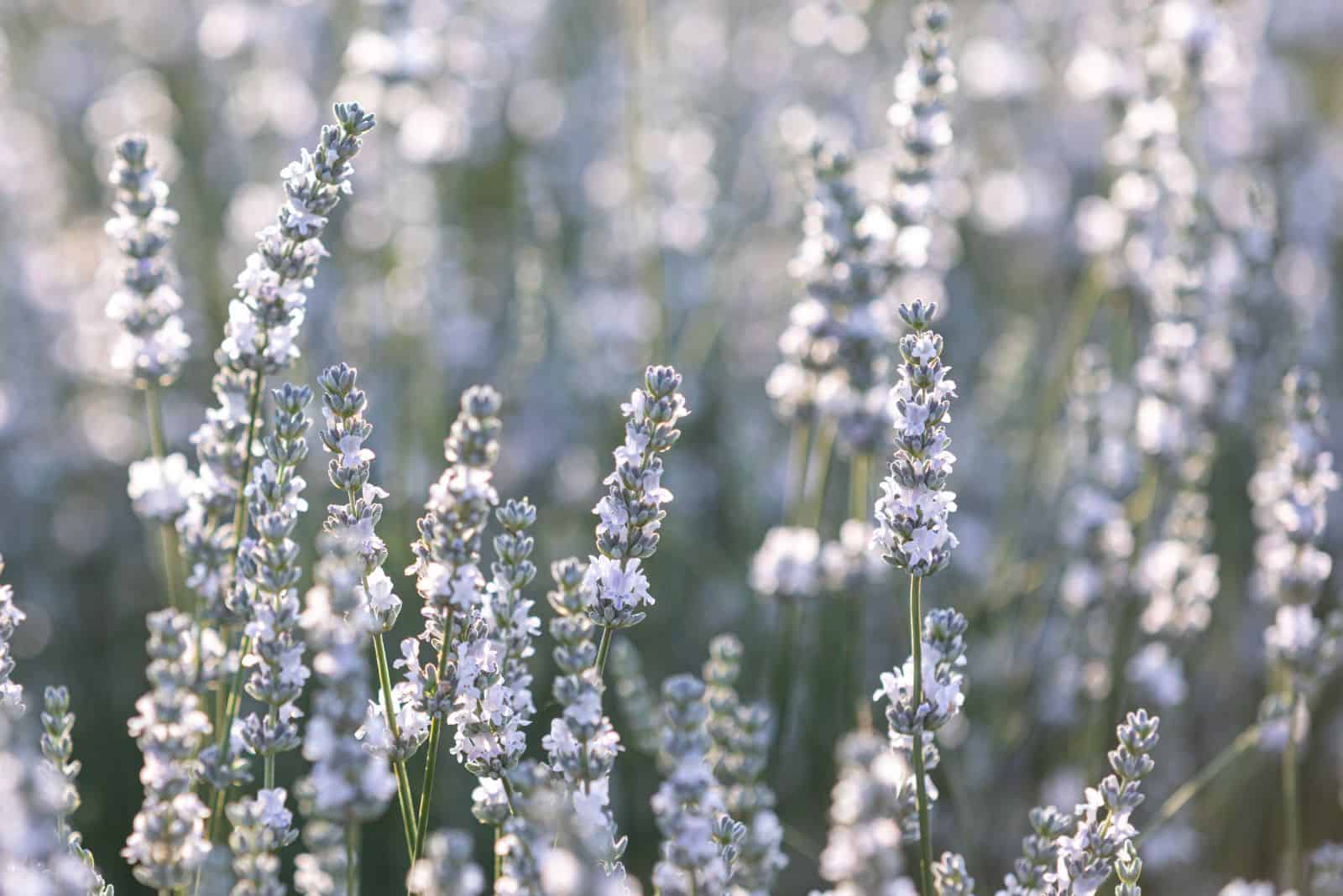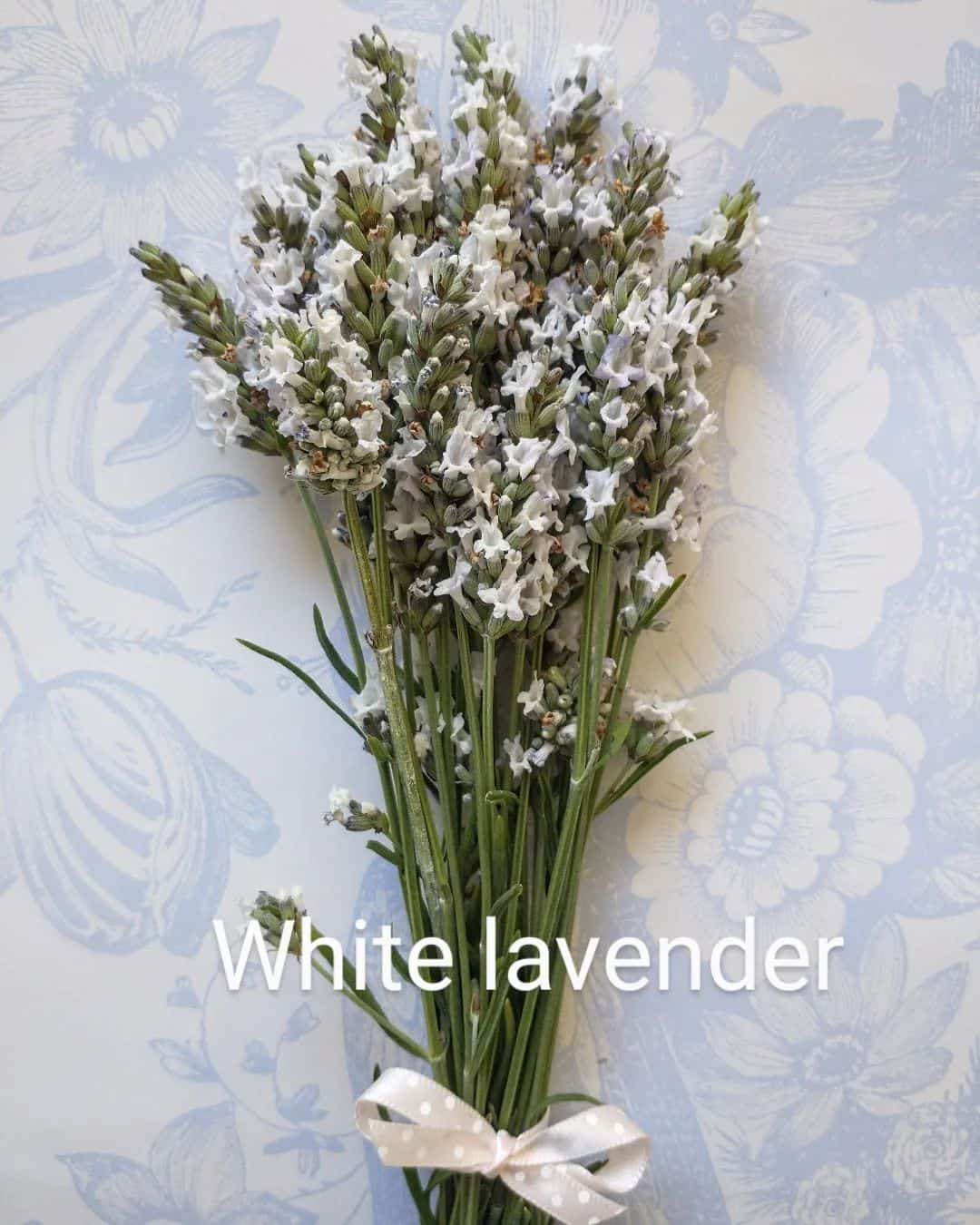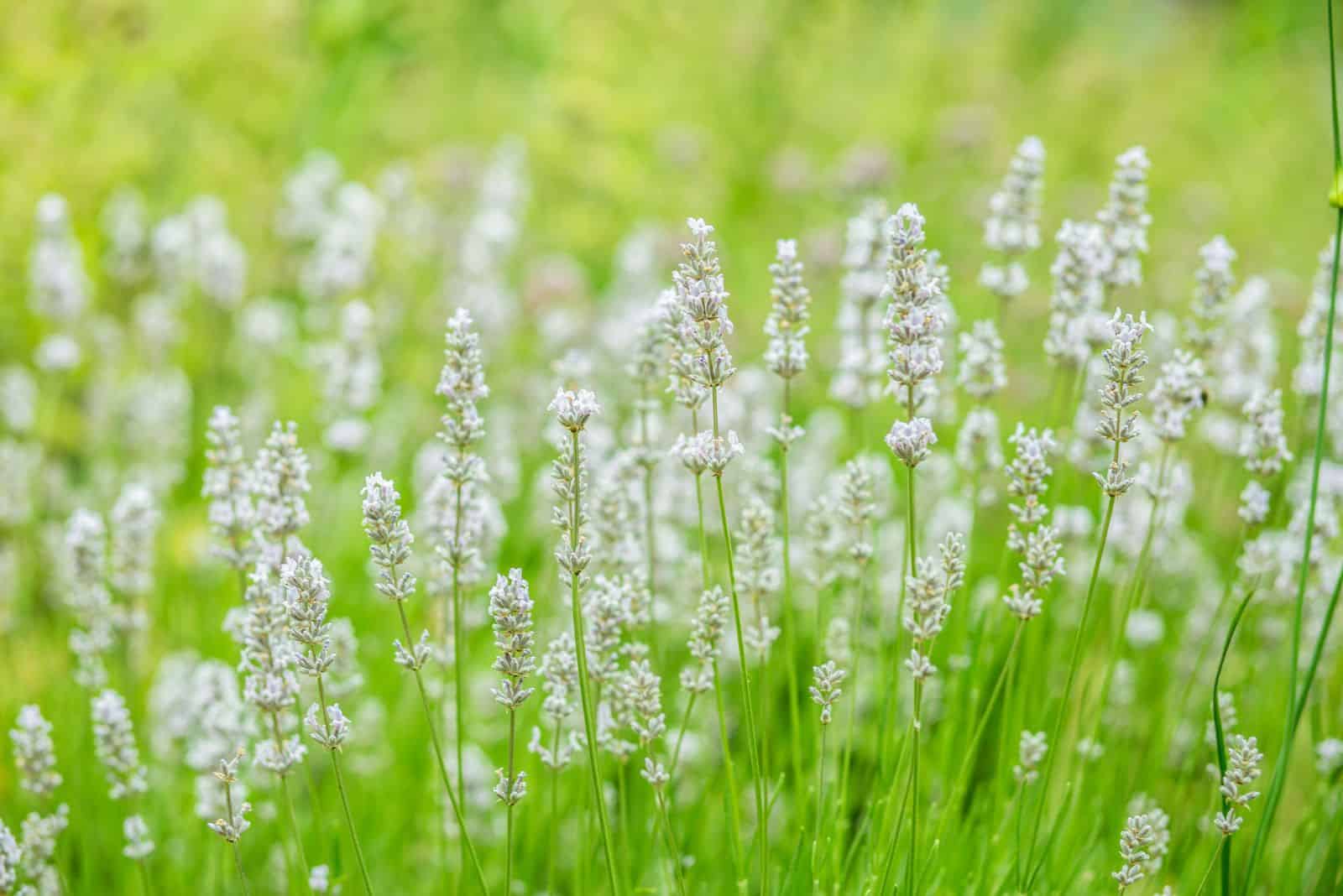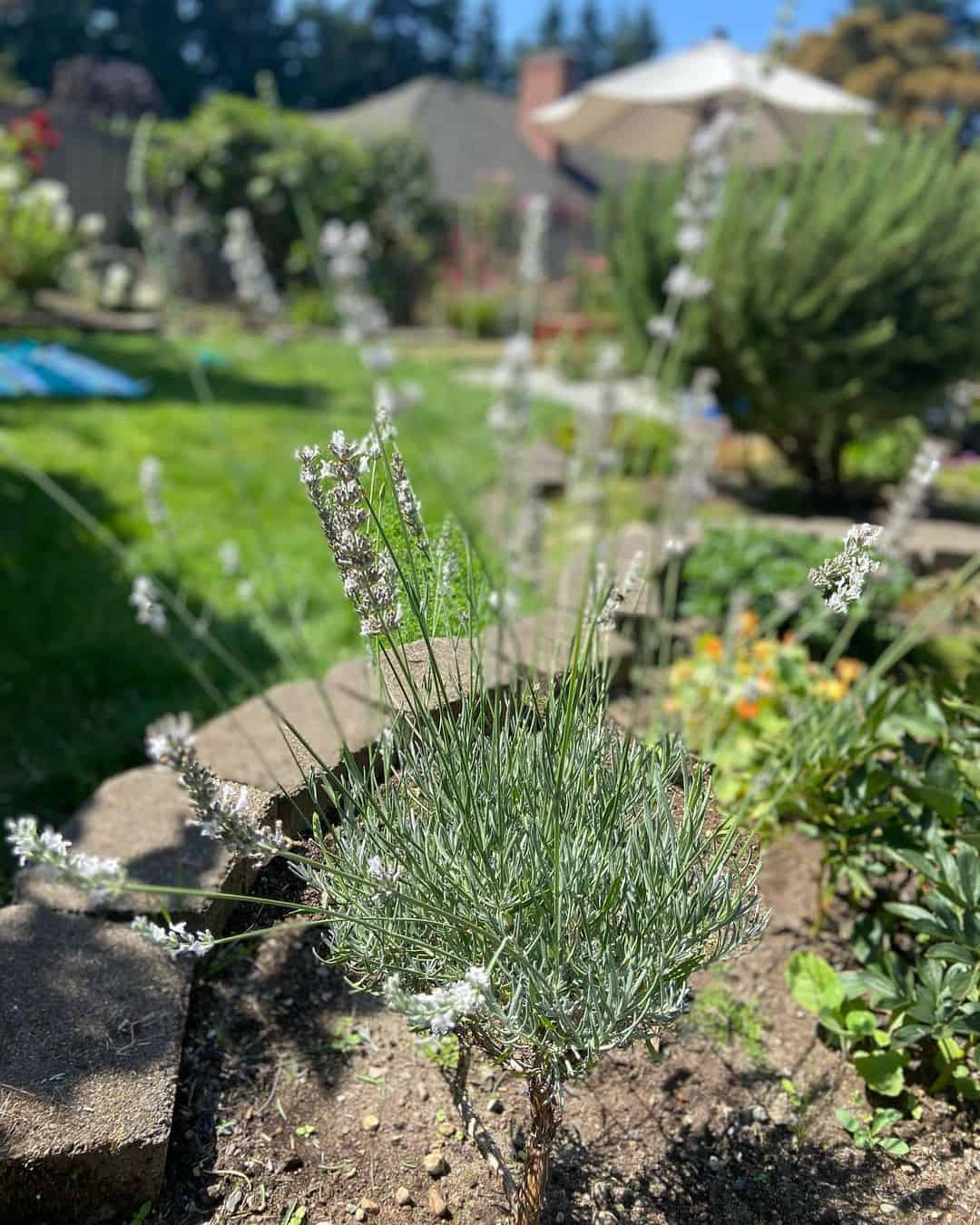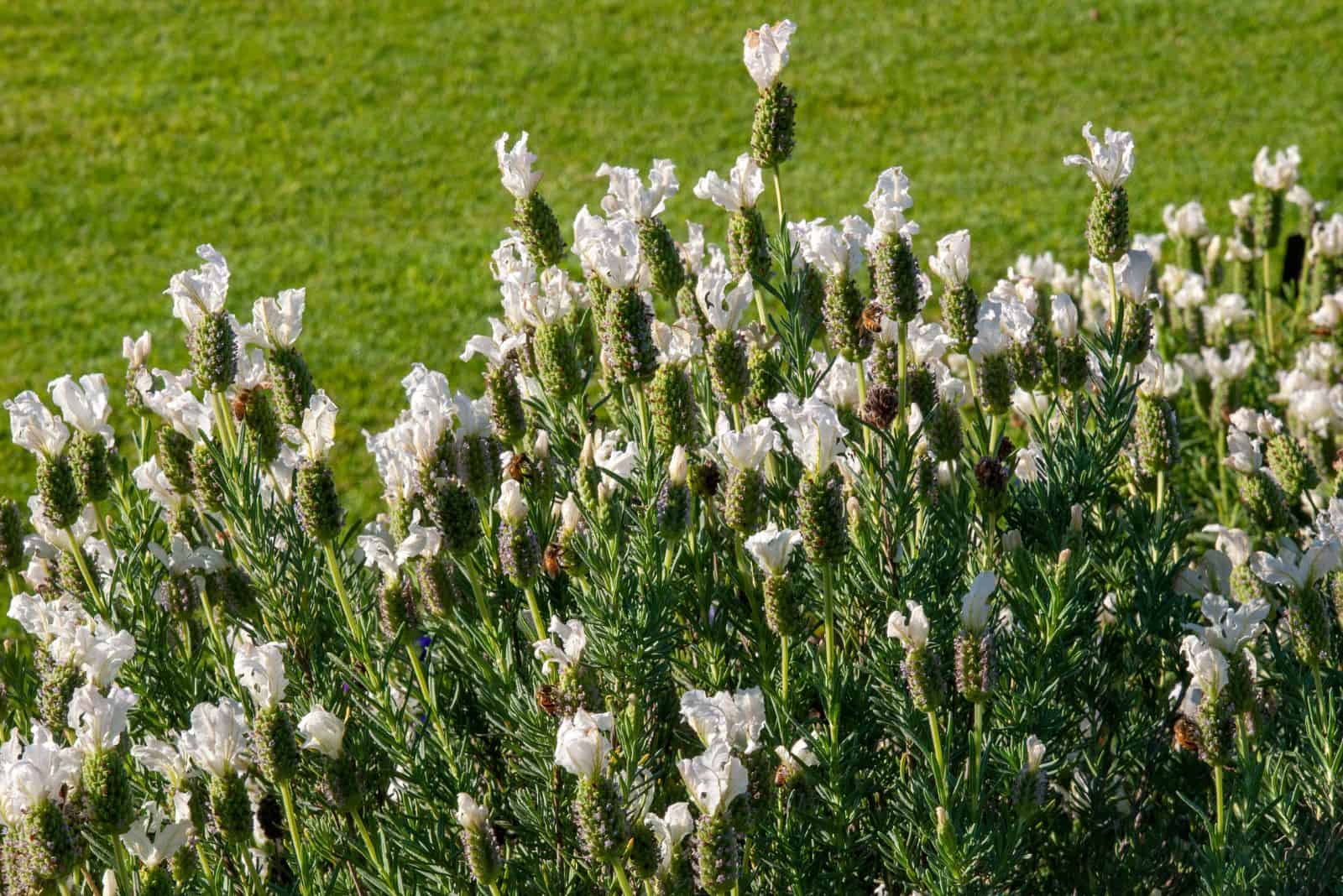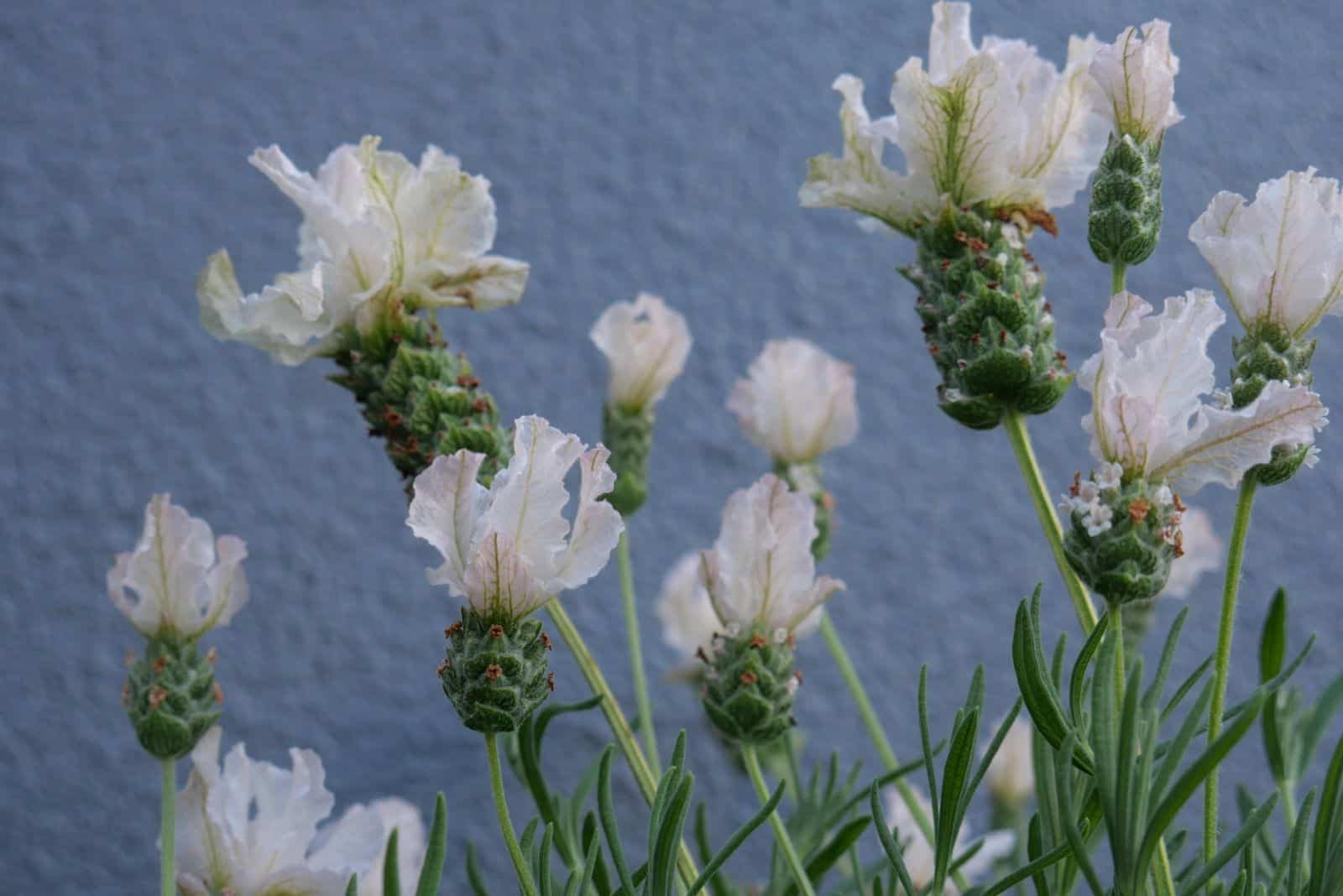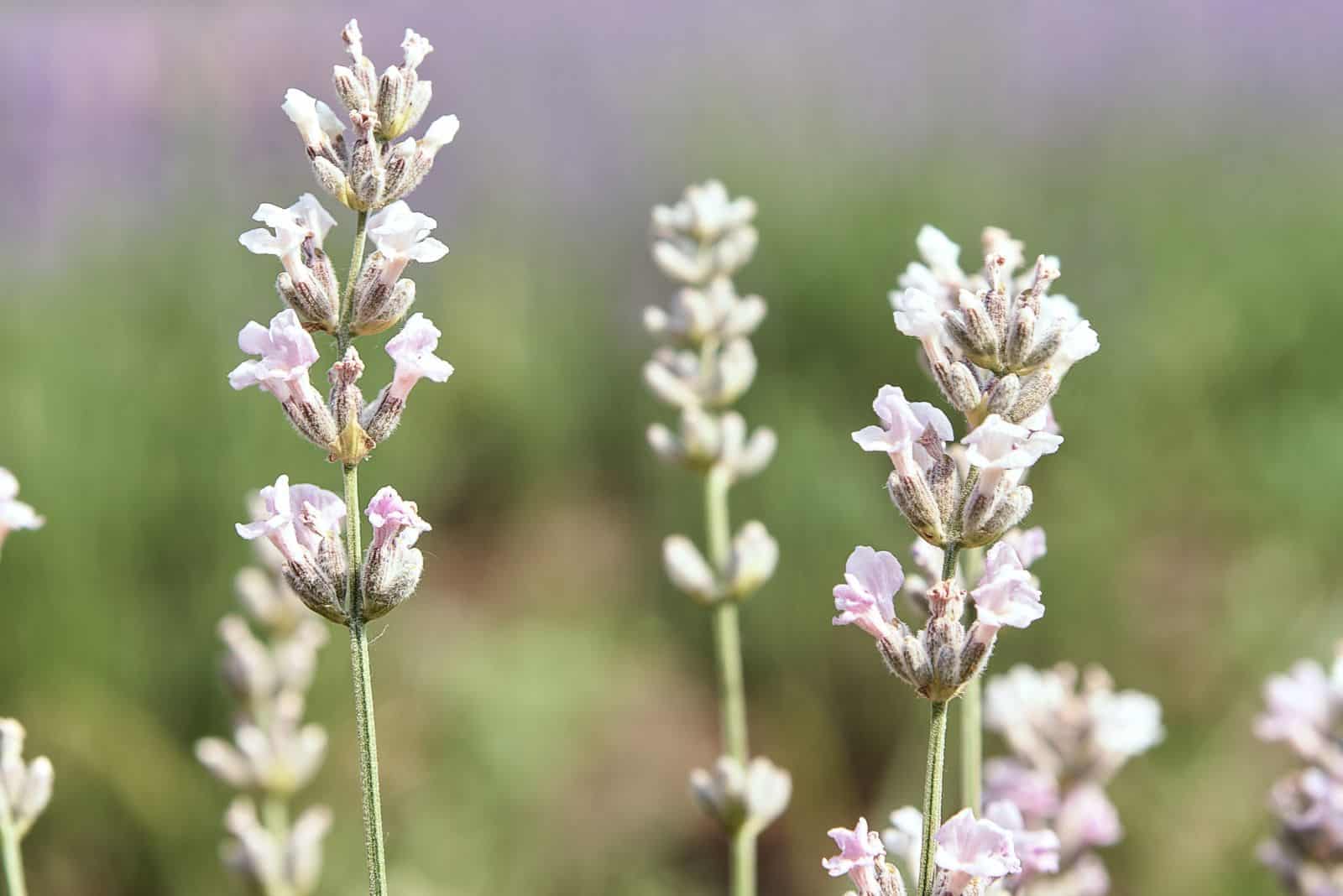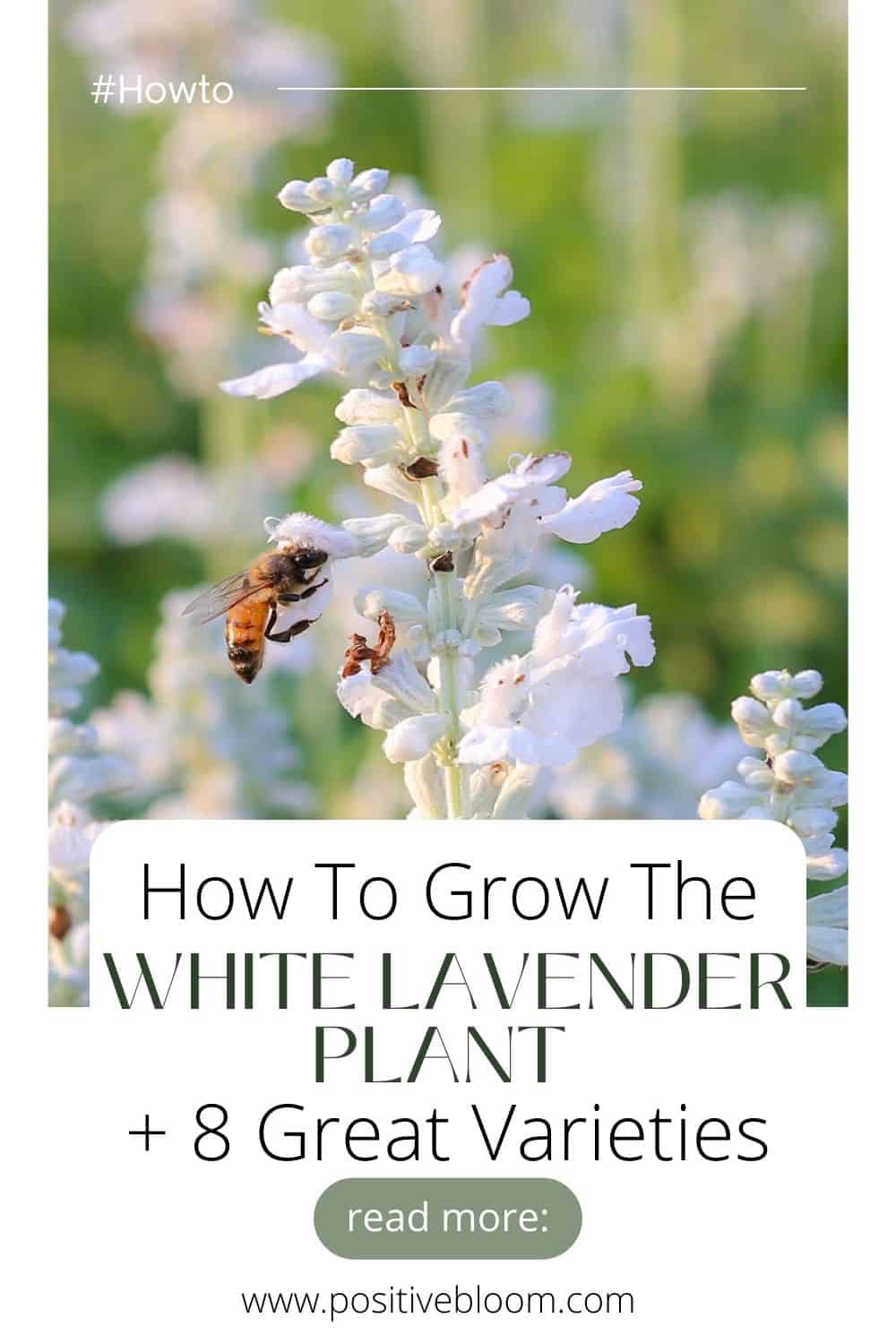Lavender is a favorite herb in many gardens, whether you want to enjoy its fragrance, benefit from its pollinator-attracting abilities, or use it to make sachets, candles, or lemonade.
And even though purple lavender varieties are the most popular, there are also white lavender plants that can create a unique display in your garden.
It is also a low-maintenance, evergreen, and drought-tolerant plant, so your only chore would be to prune it.
We’ll discuss all these things in the following sections, so let’s get started!
8 Reasons To Grow The White Lavender Plant
White varieties of lavender offer a beautiful contrast in your herb garden, are fragrant and look gorgeous in bouquets and craft projects, easy to care for, attract beneficial insects, have various applications in cooking and pest-repelling, and more!
Another thing that would improve your gardening experience with this plant is knowing when different types of lavender bloom so that you can enjoy it for as long as possible.
1. It Is Fragrant
One of the main reasons we grow white lavender is its incredible fragrance. Unfortunately, not many growers are aware of its sweet scent because retailers and perfume makers typically only use lavandin cultivars such as ‘Grosso’ and ‘Provence’.
However, white lavender plants also have sweet aromatic flowers and leaves, which can be quite soothing whether you have one plant or a whole hedge.
2. Offers Incredible Contrast
White flowers uniquely contrast with the purple lavender blossoms and other plants in your garden.
You can even create an interesting hedge or lines by interplanting classic purple and white species.
3. Provides A Unique Display
The care guide for the lavender tree is exactly the same as the one for bush lavender, so why not do something new and prune your white lavender into a lovely topiary?
Also, the white flower color of lavender is relatively rare compared to purple bracts and will make your garden unique.
4. Amazing In Bouquets And Crafts
The long flower stalks bearing white flowers are perfect for bouquets, arrangements, and projects.
You can pair them with purple varieties, other flowering plants, dry them and use them for arts and crafts, etc.
They’ll compliment other colors perfectly and create a sense of purity and tranquility if you go for an all-white look.
5. Easy To Care For
One thing that makes gardeners get this fragrant herb is the fact that it is very easy to care for. So, how to grow lavender? Simply plant it in well-drained soil, water it every couple of weeks if there’s no rain, and grow it in full sun.
You can even pair it with other drought-tolerant herbs such as sage and rosemary.
6. Symbolizes Purity And Serenity
White lavender is a symbol of purity and serenity, and gives you peace of mind every time you look at it.
You can propagate your own plant and give it to a friend who’s been through a rough patch, or you can make a lavender hedge and transform your entire landscape into a big relaxing area.
7. Suitable For Various Uses
Due to their fragrance, lavender plants are suitable for many things, such as repelling pests, making perfumes and scented candles, aromatherapy, and even cooking.
You can dry the leaves and hang them all over your home, create your own essential oils, add them to soaps, use them to make lemonade and lavender cookies, craft potpourris and sachets, and more!
8. Attracts Beneficial Insects
Lavender is primarily used in skin, hair, and health routines due to its sweet fragrance. Still, you can use it in your vegetable and herb gardens to attract pollinators and natural predators of common garden pests.
This plant will even repel mosquitoes and other harmful insects from your yard.
Growing The White Lavender Plant
White lavenders demand very little care. They just need quick-draining soil, a bit of water, and full sun.
Also, it wouldn’t hurt to learn about the lavender growing stages so that you know when to transplant it and how much to water it at every given phase (because young lavender does require regular irrigation).
Light Requirements
All lavenders prefer full sun to shaded conditions, whether you grow a rosy-purple ‘Munstead’ or white ‘Nana Alba’.
Although, if you live in a hot climate, you can plant them in a location where they’ll be exposed to direct sunlight in the early morning or late afternoon, and protect them during the hottest times of the day.
Water And Humidity
Lavender is a drought-tolerant plant, which means they don’t require much water (watering established plants every 2-3 weeks is more than enough).
But if you live in a rainy region like Florida, look for varieties that can handle high humidity and don’t water them unless there’s been a long period of drought.
The signs of overwatered lavender are leaf discolorations, droopiness, stunted growth, and wet soil, and spotting them can help you catch this issue on time before it escalates into root rot.
Also, white lavender doesn’t need high humidity, so you won’t have to make any adjustments.
Temperature
White lavender plants thrive at moderate temperatures between 65-85°F, although they can tolerate higher and lower conditions than those quite well.
English lavender can survive in temperatures as low as -20°F, but French and Spanish lavender cannot tolerate temperatures lower than 10°F (and even those are too low for them, so you should take them inside at that point).
Soil And Fertilizer
These lavender plants thrive in well-drained soils with poor or moderate fertility. If you want to plant them outside, simply mix some compost or humus into your native substrate, but don’t use too much since it can retain a lot of moisture and lead to overwatering.
And if you prefer growing these fragrant herbs in containers, you can order a quick-draining potting medium.
Finally, if the soil is still a bit heavy, water your white lavender plants less frequently.
Fertilizer
Since lavender prefers poor fertility, you don’t have to fertilize them too frequently, especially if you’ve mixed compost into the soil or used a store-bought potting medium enriched with plant food.
Still, if it’s been a while, you can spread some compost around the in-ground plants or use a slow-release fertilizer such as 7-9-5 to see the best blossoms in spring.
Pruning
Trimming lavender plants is the only real chore you’ll have. Prune it near the end of winter or early spring to remove the dead and dry stems, which will encourage it to grow faster. Shorten it to about knee-high, and that’s it.
You can also deadhead it after it flowers to stimulate blooming.
8 Best White Lavender Cultivars
You can grow various white lavender cultivars, and we usually choose them based on their USDA hardiness zone.
For instance, the differences between French and English lavender are myriad, but one of the main ones is that English lavender is hardier than French.
Below, you can find eight amazing white lavender plants and their preferred USDA zones.
English Lavender
English lavender plants are hardy in USDA zones 5-9 and typically bloom in June and July.
Lavandula Angustifolia ‘Nana Alba’ – This cultivar is a dwarf variety that usually gets around 10-12 inches tall and bears snow-white blossoms on flower spikes.
Lavandula Angustifolia ‘Arctic Snow’ – The dense, snowflake-like flowers of the ‘Arctic Snow’ cultivar usually appear in late summer and contrast with the gray-green leaves, generally getting 20 inches tall.
Lavandula Angustifolia ‘Celestial Star’ – This V-shaped plant has characteristic green leaves, although the 12-inch stems can sometimes be dark green and contrast the purely white blooms.
French Lavender
The hardiness zone for French lavender is 8-11, and its cultivars typically bloom from late spring to early summer.
Lavandula Dentata ‘Pure Harmony’ is one of the rare purely white varieties, and is adorned with signature cylinder-like blossoms.
Spanish Lavender
Spanish lavender is hardier than French lavender, and you can grow it as a perennial in zones 6-11, where it’ll bloom in spring and summer.
Lavandula Stoechas ‘Anouk White’ – The good news is that the ‘Anouk’ cultivar also comes in white, so you can enjoy its unique flowers. The lower parts are purple-blue, but the flower heads are entirely white.
Lavandula Stoechas ‘Ballerina’ – This variety is similar to the previous one because it also has purple flowers topped with white bracts.
Lavandin
Lavandin is a hybrid between English and Portuguese lavender, and is hardy in USDA zones 5-9, where it blooms from July to September.
Lavandula x Intermedia ‘White Grosso’ – ‘Grosso’ is one of the famous cultivars suitable for coastal areas and is highly fragrant, so you can use it to make sachets and homemade pest repellents.
Lavandula x Intermedia ‘Provence White’ – This variety grows faster than other cultivars and bears abundant white and fragrant blossoms, so you can use it to make candles, soaps, essential oils, perfumes, pest repellents, etc.
Final Thoughts
You can care for your white lavender plant the same way you would for any other lavender: keep it in full sun, water it sparingly, plant it in a moderately fertile growing medium, and fertilize it in spring.
But why grow this plant in the first place? Well, it looks terrific in gardens and in bouquets and various projects, it is easy to care for, highly fragrant, can attract pollinators and natural predators of garden pets, and even repel some pests due to its scent.
And if you don’t know which white cultivar to plant, you can go with ‘Nana Alba’, ‘Pure Harmony’, ‘Ballerina’, or ‘Provence White’.
You don’t have to start a lavender farm immediately; try one plant and see how it goes.
Until next time!
Like this post? Share or pin it for later!


